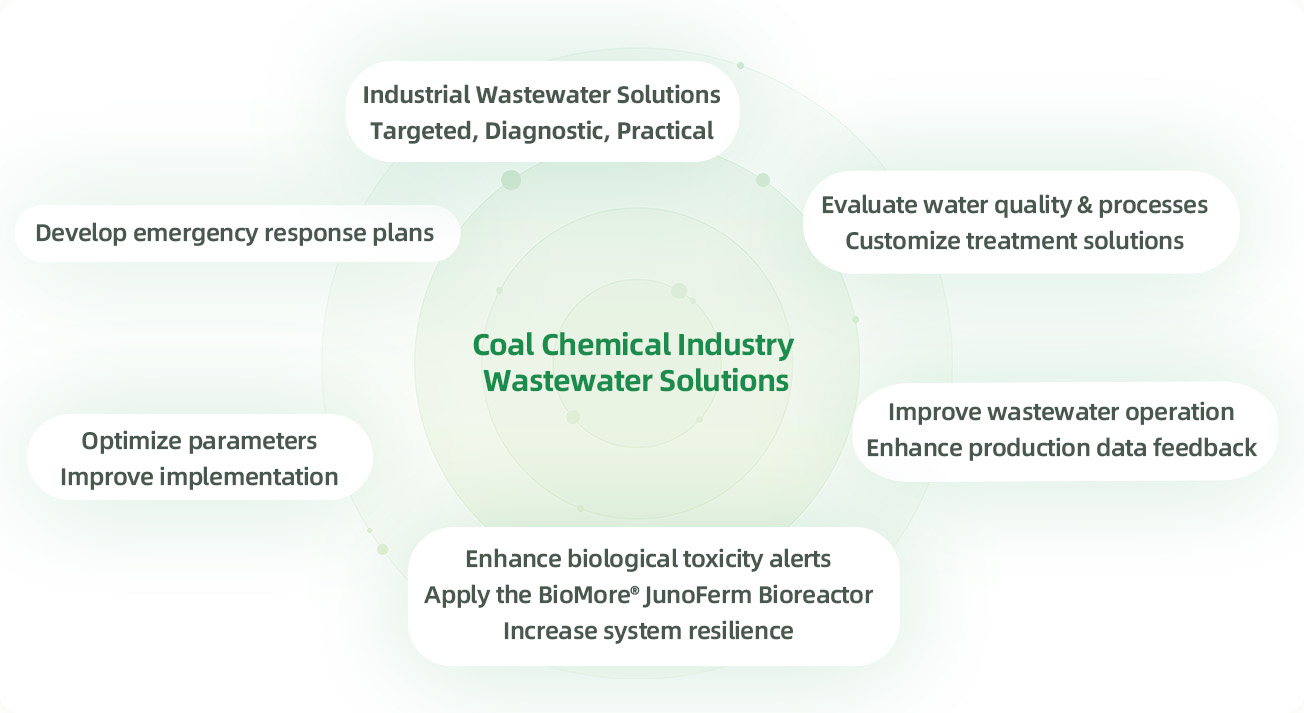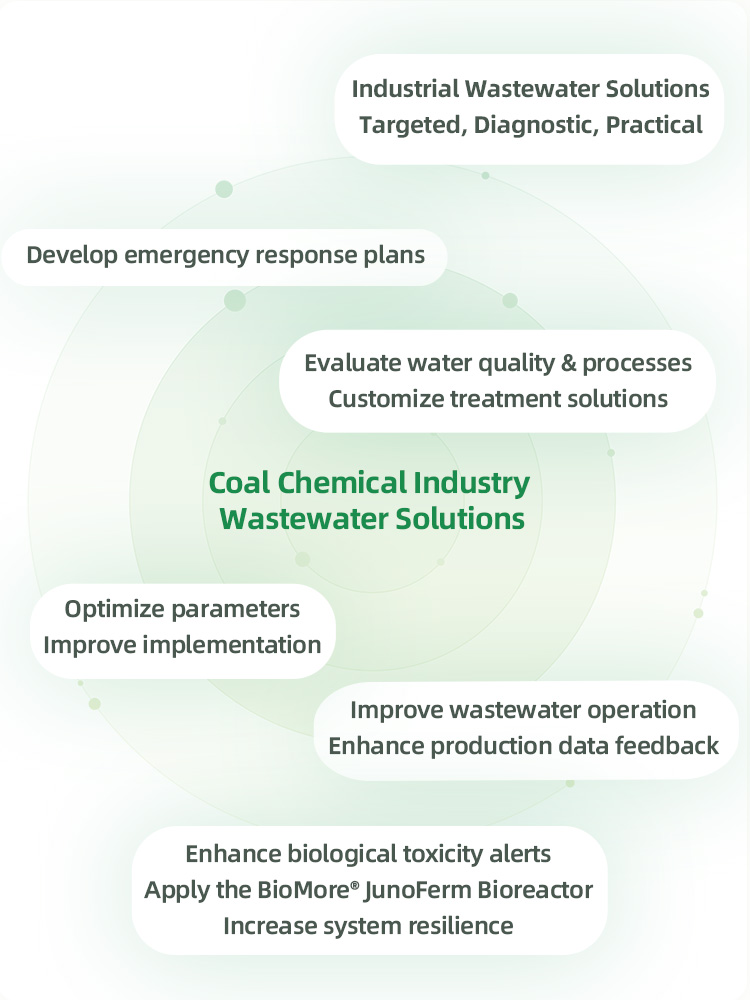 Peculiarity
Peculiarity
 Complex Composition and High Pollutant Concentrations:The wastewater contains a wide range of toxic, persistent organic pollutants, such as phenols, cyanides, polycyclic aromatic hydrocarbons, thiocyanates, benzo[a]pyrene, quinoline, indole, biphenyls, and petroleum-based compounds, as well as inorganic pollutants such as ammonia nitrogen and sulphides. These substances are difficult to degrade, making treatment highly challenging.
Complex Composition and High Pollutant Concentrations:The wastewater contains a wide range of toxic, persistent organic pollutants, such as phenols, cyanides, polycyclic aromatic hydrocarbons, thiocyanates, benzo[a]pyrene, quinoline, indole, biphenyls, and petroleum-based compounds, as well as inorganic pollutants such as ammonia nitrogen and sulphides. These substances are difficult to degrade, making treatment highly challenging.
 High Toxicity and Poor Biodegradability:Cyanide in the discharge is highly toxic, which can badly affect the central nervous system and lead to paralysis and asphyxiation. Certain organics in the wastewater, especially heterocyclic and aromatic hydrocarbons, are present at concentrations exceeding the tolerance threshold of microorganisms and are poorly biodegradable, thus severely limiting biological treatment effectiveness.
High Toxicity and Poor Biodegradability:Cyanide in the discharge is highly toxic, which can badly affect the central nervous system and lead to paralysis and asphyxiation. Certain organics in the wastewater, especially heterocyclic and aromatic hydrocarbons, are present at concentrations exceeding the tolerance threshold of microorganisms and are poorly biodegradable, thus severely limiting biological treatment effectiveness.
 Severe Environmental Impact with improper treatment:High ammonia nitrogen concentrations can lead to odours and eutrophication in receiving water bodies, significantly damaging aquatic ecosystems.
Severe Environmental Impact with improper treatment:High ammonia nitrogen concentrations can lead to odours and eutrophication in receiving water bodies, significantly damaging aquatic ecosystems.
 Large Wastewater Volume:The considerable volume of wastewater increases the complexity and scale of the treatment process.
Large Wastewater Volume:The considerable volume of wastewater increases the complexity and scale of the treatment process.
 High Suspended Solids Load:The wastewater contains large amounts of insoluble and poorly soluble solids, such as raw coal particles and fly ash, further complicating the treatment process.
High Suspended Solids Load:The wastewater contains large amounts of insoluble and poorly soluble solids, such as raw coal particles and fly ash, further complicating the treatment process.
 Presence of Heterocyclic Organics, Phenols, Oils, and Ammonia Nitrogen:These substances are toxic, hazardous, and typically present at high concentrations. They also contribute to colour intensity, bringing additional challenges for wastewater treatment.
Presence of Heterocyclic Organics, Phenols, Oils, and Ammonia Nitrogen:These substances are toxic, hazardous, and typically present at high concentrations. They also contribute to colour intensity, bringing additional challenges for wastewater treatment.  Q&A.
Q&A.
 Complex wastewater composition and an overloaded biological treatment system have limited production capacity and prevent output expansion.
Complex wastewater composition and an overloaded biological treatment system have limited production capacity and prevent output expansion.
 Equipment maintenance causes fluctuations in influent quality, leading to shock loads that are difficult for the system restoration.
Equipment maintenance causes fluctuations in influent quality, leading to shock loads that are difficult for the system restoration.
 Effluent COD, ammonia nitrogen, and suspended solids (SS) remain high, resulting in elevated costs for further treatment.
Effluent COD, ammonia nitrogen, and suspended solids (SS) remain high, resulting in elevated costs for further treatment.
 Fluctuations in toxic and poorly biodegradable organic compounds often exceed microbial tolerance threshold, severely impacting the biological treatment system and causing effluent levels of ammonia nitrogen, total nitrogen, and COD to exceed discharge limits.
Fluctuations in toxic and poorly biodegradable organic compounds often exceed microbial tolerance threshold, severely impacting the biological treatment system and causing effluent levels of ammonia nitrogen, total nitrogen, and COD to exceed discharge limits.  Solution
Solution


 Case
Case